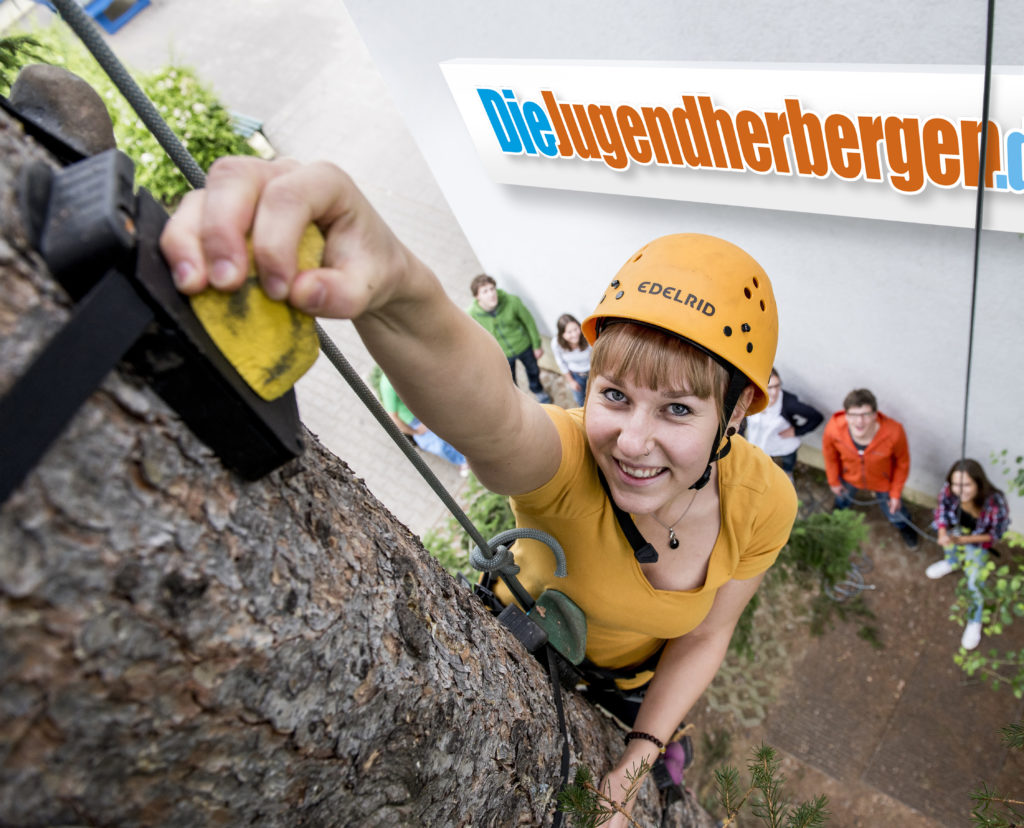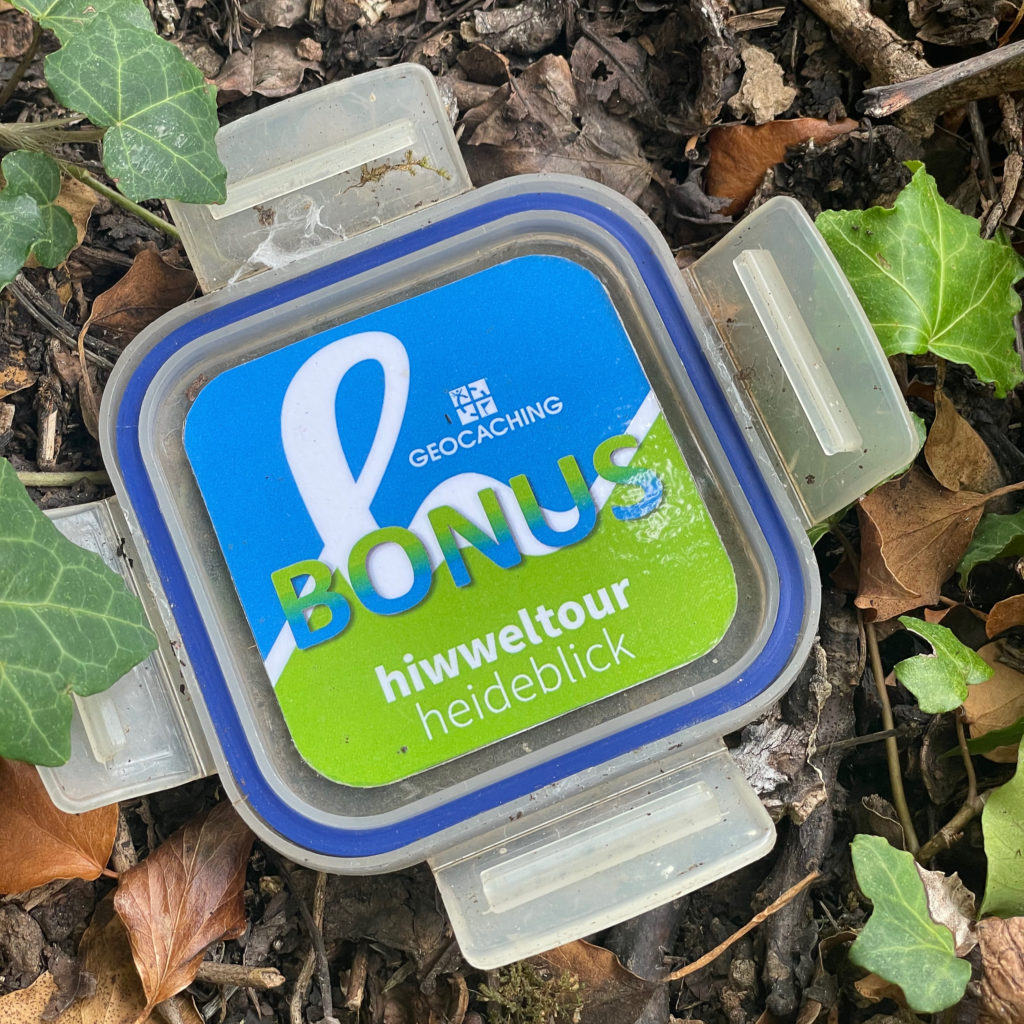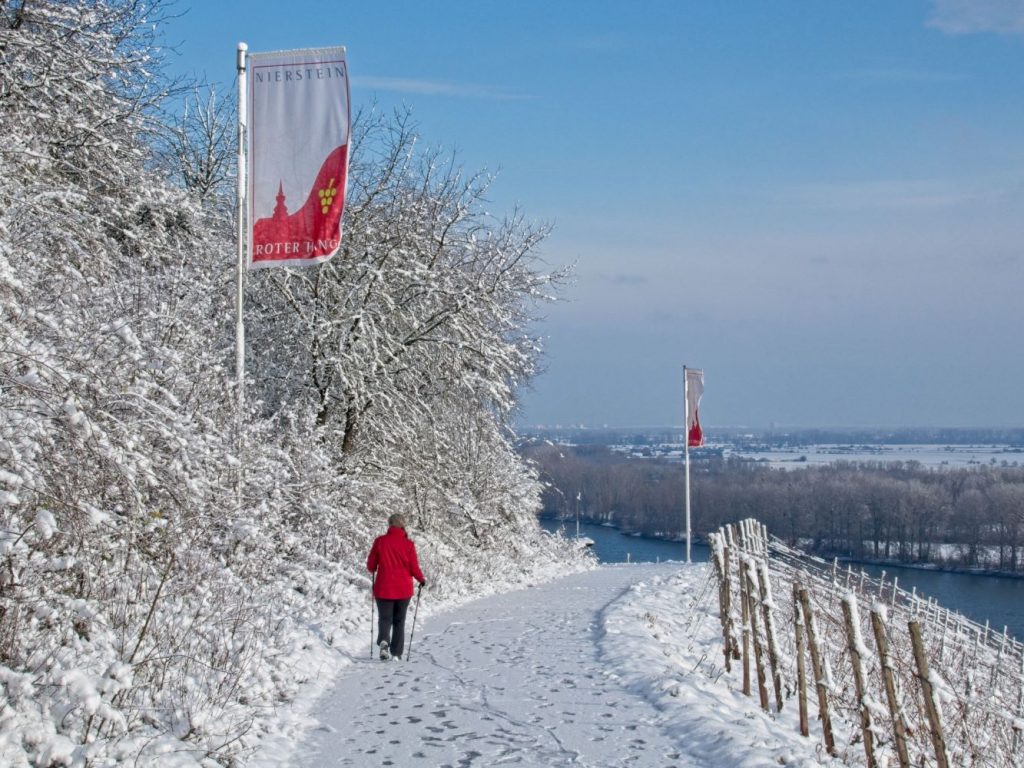What remained were fossils and deposits, such as snails, shark teeth or manatee skeletons. And in the middle of Rheinhessen one speaks of the oldest find of human activity north of the Alps to date. Hardly anyone knows that! Geology can be so exciting! Go on an excursion or hike, visit exciting museums and information centers, or marvel at works of art that celebrate the geological, paleontological and archaeological brilliance of the region!
Top 1
Weinheimer Trift: A geology hike on the tracks of the manatee
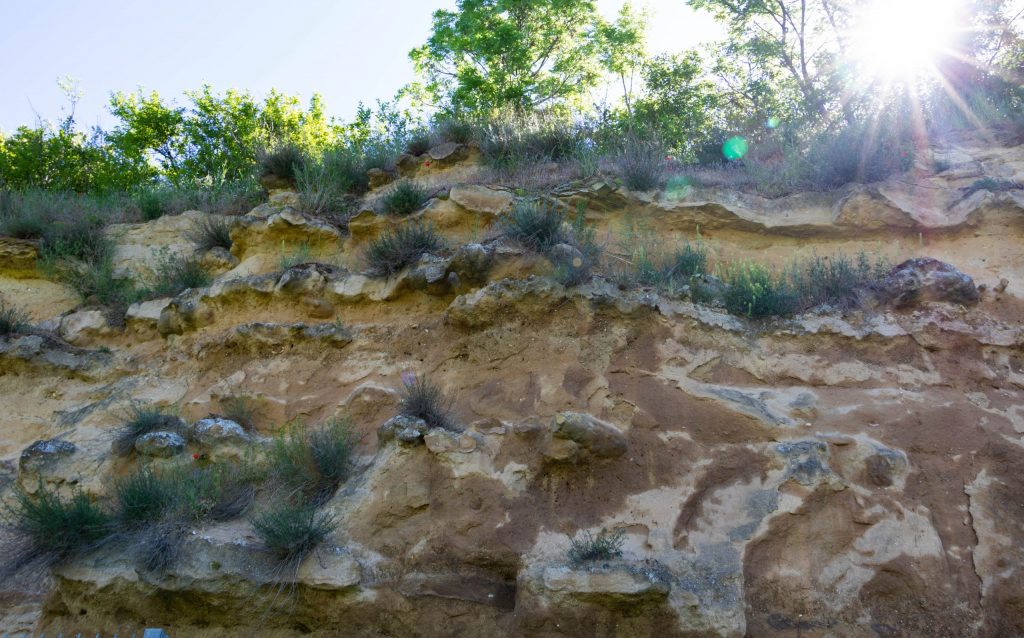
Over 150 meters long and eleven meters high, the bright wall towers towards the sky. Today, the natural monument "Weinheimer Trift" is framed by vineyards and lies quietly on the edge of the village. But in former times, about 30 million years ago, the sea roared here. Sharks and rays went hunting. Manatees floated in the water. Oysters and velvet shells grew on the seabed. Crabs and worms dug small tunnels into the rock. The valley of Weinheim was a subtropical-Mediterranean sea bay on the east coast of a large peninsula - and is today one of the best preserved and most species-rich fossil deposits in the coastal sediments of the "Mainz basin". People mined sand from the wall until 150 years ago, when brave geologists and paleontologists secured this treasure of the earth's history for the first time: shells of mussels and snails, shark teeth and manatee bones, countless remains of microscopic animals and plants, and of course the wall itself. It is now protected from predators by a fence, but is easy for visitors to see and is inscribed with information panels. It is best to bring binoculars!
> Hiking tips:
Circular hike "weinheimense route", about 10 km with panels on the regional geological history, culture and wine, as well as flora and fauna. The cultural and wine ambassadors also offer guided tours, including to the second excavation site "Zeilstück", which can otherwise only be viewed from a distant platform.
Coastal paths Rheinhessen, three circular hiking trails offer the rare opportunity of a time travel into the geological past.
Top 2
Eppelsheim: marvel at dinotheria on the Urrhein river
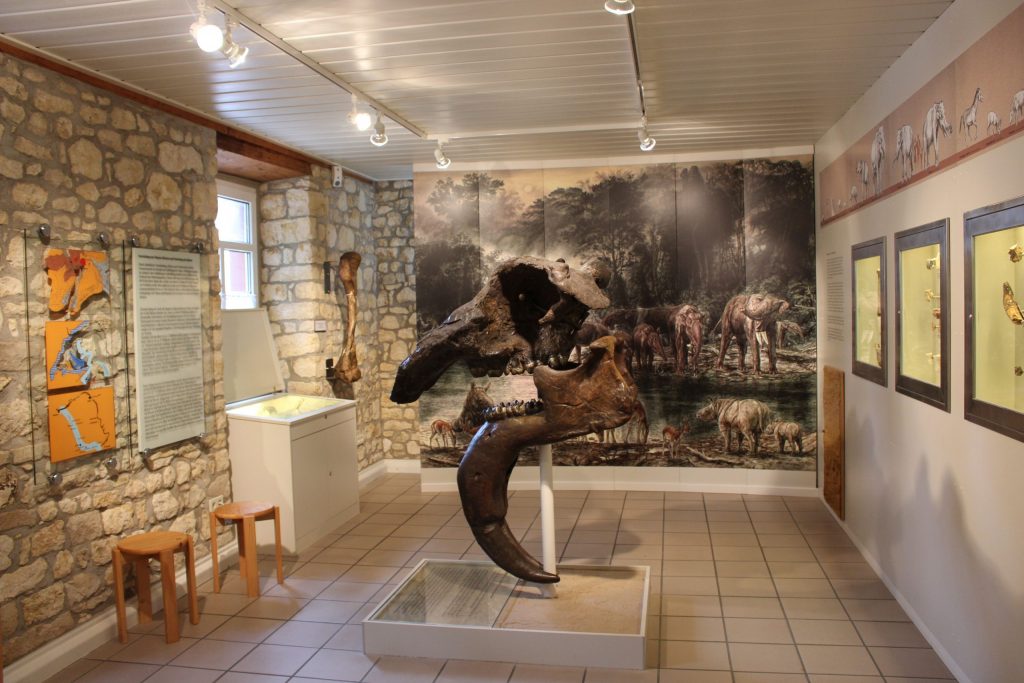
We all know today's Rhine, this mighty river of European navigation. Like a caring father, it hugs the Rhine-Hessian flank from Worms via Mainz to Bingen. But it did not always follow this course. Rather, it was - about ten million years ago - a small river flowing slowly and low in several channels that meandered diagonally across what is now the Rhine-Hessian region. During high water and flooding, it washed up bones or teeth of dead animals. These in turn came to light during sand mining. Researchers celebrated a world sensation in 1835: the recovery of a complete Dinotherium skull. A 3.50-meter "beast of terror" with a trunk, it was a relative of elephants. The researchers also found fragments of great apes, rhinoceroses, prehistoric horses, muntjac deer or bear dogs. To date, 35 mammal species - 25 of which were found and described for the first time in Eppelsheim. This makes the small community one of the most famous mammal sites from the Miocene period. Visitors can marvel at casts of the original finds and copies of the rare fossils in the museum, as well as study climate change at the "Urrhein".
> Museum Tip: Dinotherium Museum Eppelsheim (opening hours on the homepage) with panoramic pictures, drawings, and impressive casts. The originals are in the most renowned museums in the world, in Mainz, Vienna, Basel, the Senckenberg Museum in Frankfurt or the Natural History Museum in London.
Top 3
Eckelsheim: Jump into the primordial sea with all your senses
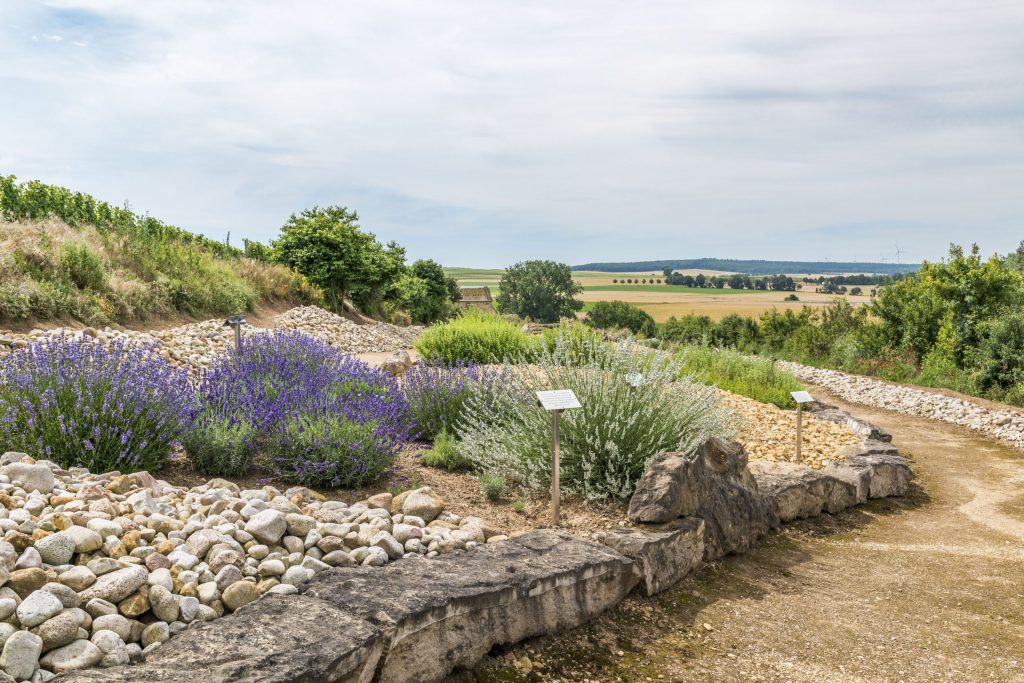
Hot lava flows and semi-desert about 290 million years ago. The "Beach trail of the senses"jumps back even further in the history of the earth than the Weinheim Trift. Into the time of the dry earth antiquity, over the primeval sea in the tertiary 30 million years ago, up to today into the vine-covered present. On a leisurely walk between "Beller Kirche" and Steingrube, local patriots have created a multifaceted scenario. Visitors see, feel, hear and taste earth history! How does that work? On the barefoot path, different types of rock crunch underfoot or fine sand runs through the toes. The descendants of earlier aromatic plants are grouped to match the rocks of the earth's history and exude their fragrance. And everything is surrounded by vines and, in autumn, ripe grapes. The ten stations are fun for the whole family and also suitable for people with disabilities. But please check in advance the current accessibility of the trail on the homepage.
> Walk Tip: Beach trail of the senses, 1.6 kilometers, sturdy shoes, easy to walk (not barrier-free).
Top 4
Flonheim: Watch lifelike animated manatees
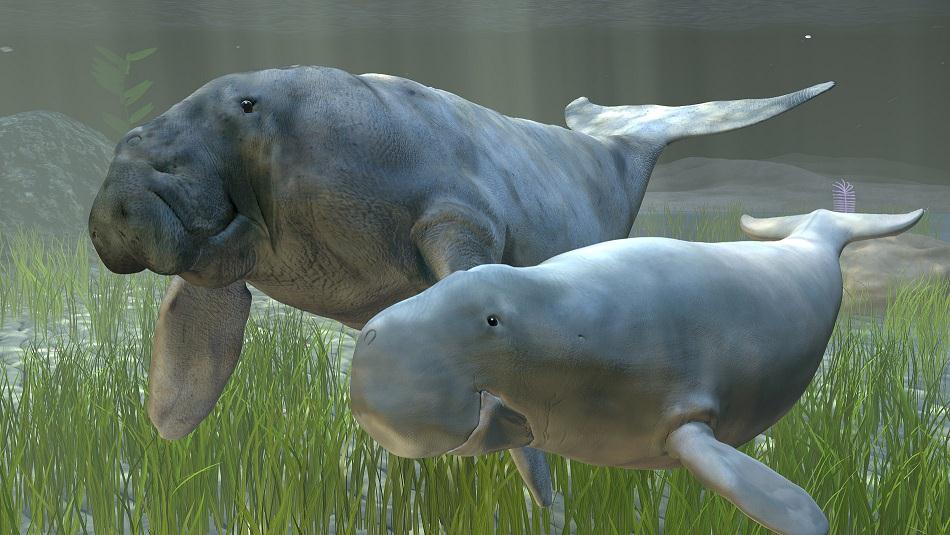
Flonheim is known for the most beautiful trullo of the region, a whitewashed round vineyard cottage. And for its ocher-colored sandstone pits, which have provided magnificent masonry of the winegrowers' houses everywhere in the area. But here, too, sea creatures once ruled the area. In Flonheim-Uffhofen, a completely preserved manatee skeleton was found during construction work. The skeleton is on display in the new Flonheim Info Center on display. In addition, virtual life was breathed into the fat gray underwater giant from prehistoric times: the animated manatee "Floni" with black beady eyes now happily makes its rounds and even seems harmless, as it was a leisurely herbivore. Descendants still live in America and Australia, for example, and are threatened with extinction. In the information center, a former seashore from 30 million years ago has been recreated with real shells, corals, oysters and shark teeth. The people of Flonheim know a thing or two about small, fine "experience museums".
> Infothek Tip: Infothek/local museum Flonheim (opening hours on the homepage) with sight cow animation and sea beach replica.
Top 5
Dorn-Dürkheim: Evolution column and prehistoric man at the freshwater lake
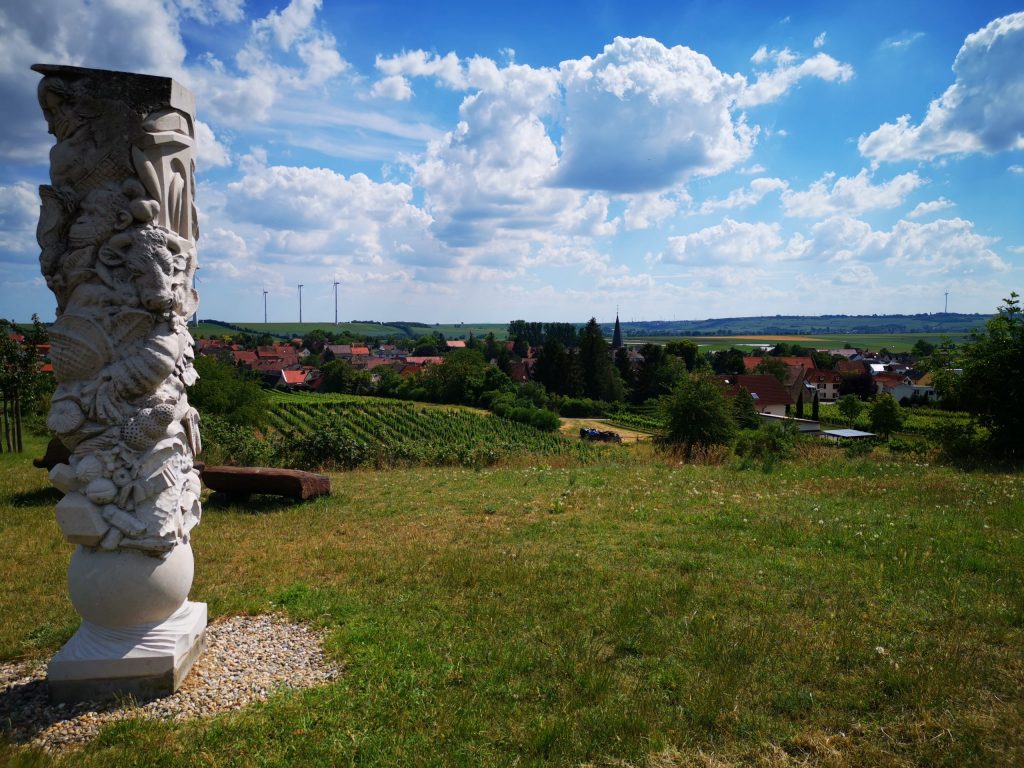
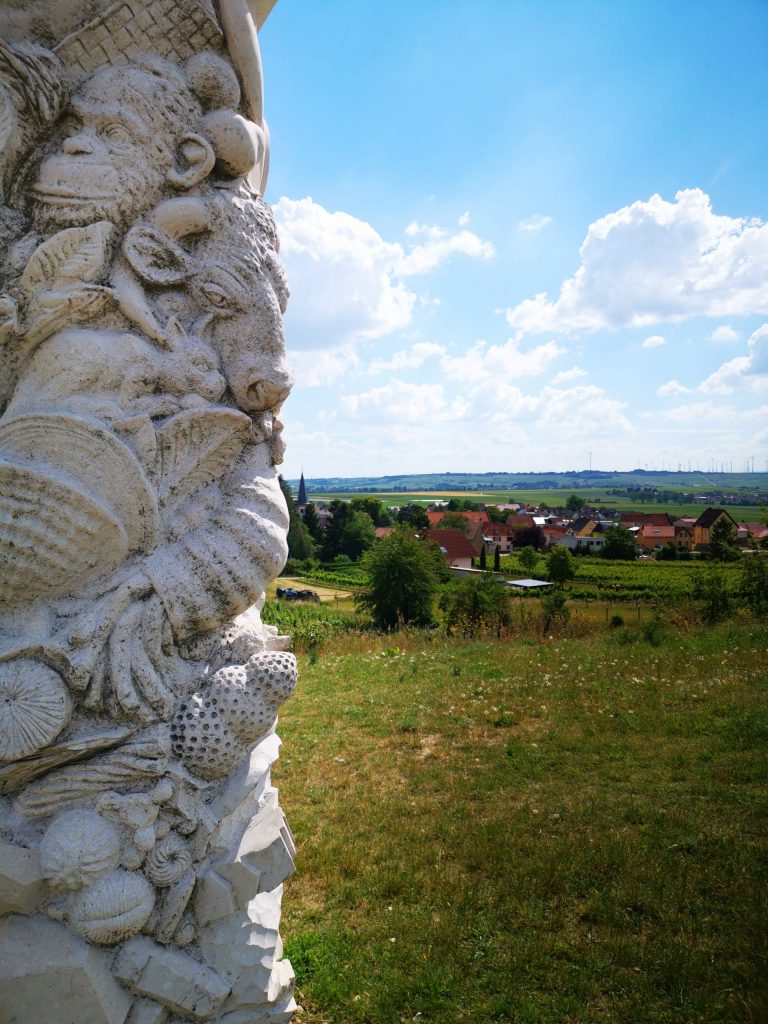
The white marble column soars three meters high. It is a whirlpool of life, diversity and beauty. Wild chaos in perfection! The base begins with a cosmic whirlpool, minerals, tiny creatures, shells. A ginko leaf winds its way up. A cone nestles against an ear of corn. A dolphin leaps and seems to tease the kissing human couple. The in Dorn-Dürkheim resident artist Achim Ribbeck and his wife Ursula Mandel donated this work of art to the community in 2009, honoring evolution and the excavations that took place here starting in 1972. Remains of 80 vertebrate species were found: including prehistoric horses, rhinos or saber-toothed tigers. They are about 8.5 million years old and thus belong to the age of the "Turolium". There is no more important fossil site of this phase in the whole of Europe. Between 1989 and 1996, further research was carried out: It was discovered that 800,000 years ago, a freshwater lake was dammed at this site - and apparently a resting place for migrating prehistoric people from the Mediterranean region. They probably used stone tools found here to dismember animal carcasses. The Dorn-Dürkheim site is thus the oldest evidence of human activity north of the Alps to date. Achim Ribbeck honored this finding again with a sculpture, the "stone beater".
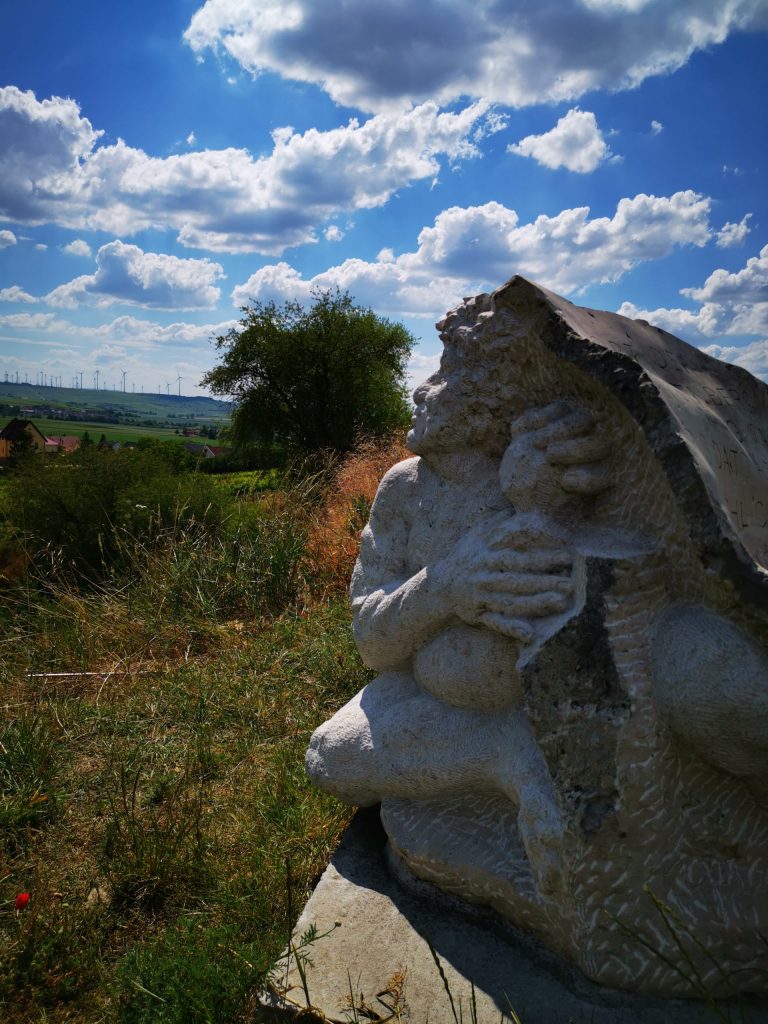
> Art Tip: The artworks "Evolution Column" and "Stone Knocker" are freely accessible and located above the cemetery, at the discovery site, with a view over the region. The original finds from the excavation site are now in the Senckenberg Museum in Frankfurt am Main.
Other exciting museums in the Rheinhessen region:
- In Mainz: The Natural History Museum Landessammlung für Naturkunde Rheinland-Pfalz in Mainz is the largest museum of its kind in Rhineland-Palatinate and offers a variety of discoveries. In the entrance area, for example, stands the gigantic replica of a dinotherium.
- In Alzey: The Museum Alzey has, among other things, a paleontological and geological department. There is also the complete and famous manatee skeleton "Elsa" from Weinheim.
- In Nierstein: The Paleontological Museum Nierstein is a treasure trove full of fossils and shows earth history from the Cambrian to the Ice Age.
Due to the Corona crisis, please be sure to check in advance with museums and information centers for opening hours or possible virtual tours.
The author would like to thank Dr. Winfried Kuhn for his kind expert advice

